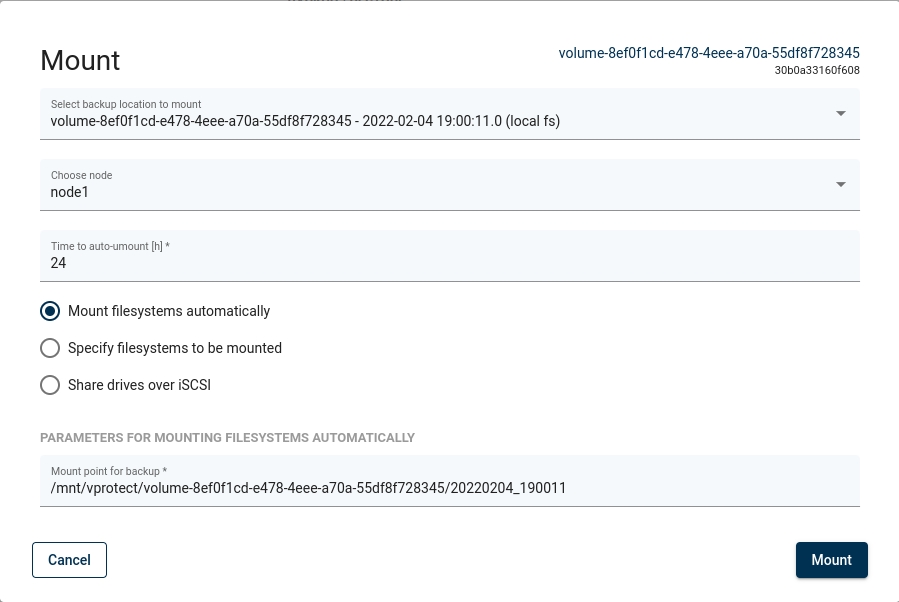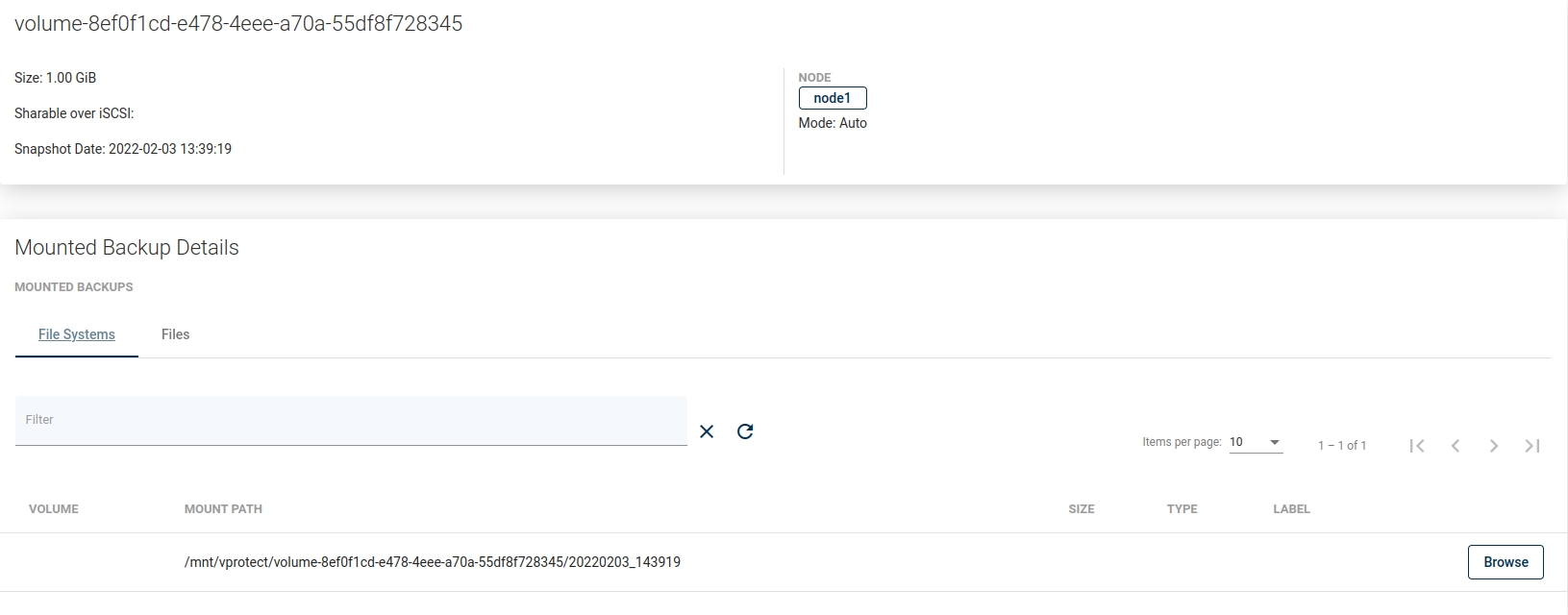Mounted Backups (File-level Restore)
To mount backup, go to the Instances tab under the Storage Providers section on the left side menu, then click on the mount icon next to the chosen storage instance ![]()

In the popup window, you can select which backup you want to mount and on which node.

The Mounted Backups tab shows mounted storage-instance backups on the vPlus node.

Storage- mounted instance nameMODE- Auto - vPlus auto-detects filesystems and mounts them on the path "/mnt/vprotect/". In Manual mode, the user chooses the mount point for selected filesystems.NODE- the vPlus node is responsible for the mounting job.SNAPSHOT DATE- the date when the backup was created.FILE SYSTEMS- the number of mounted filesystems.FILES- the number of mounted virtual disk images.
Next to every mounted backup, you can see three buttons:
To unmount backup, click on ![]() To remount backup, click on
To remount backup, click on ![]() To go to the details page of mounted backup, click on
To go to the details page of mounted backup, click on ![]()
On the details page, you can view basic information, or you can go deeper and browse the files.

With a web browser, you can even obtain a single file from your storage instance backup.